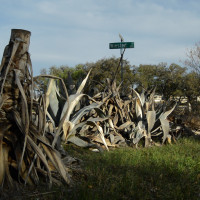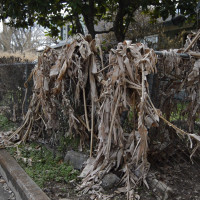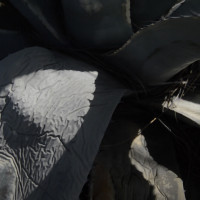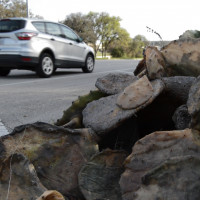Extreme Temperatures Devastate Austin Succulents
By Kenny Jones
Reporting Texas TV
AUSTIN, Texas – February’s winter storm devastated thousands of succulents throughout Austin due to prolonged exposure to subfreezing temperatures.
Workers at East Austin Succulents proactively housed as many succulents as could fit in their greenhouses, but the storm still destroyed about 10% of their inventory.
The extended freeze expanded moisture stored in succulents and burst their cell walls, giving prickly pear cacti and century plants a melted appearance due to their lost structure. The freeze also dehydrated several non-native plants and shrubs.
Conservatory biologist Dr. Norma Fowler says to not prune or dispose of them until certain of what plant tissue is dead or alive, which may take a few weeks to determine.
“I’m gonna wait until all the leaves are either nice and green – that means alive – or brown, brown brown! Not just brown, but stiff. They crack. Eventually everything will be one or the other,” Fowler said.
New cacti can grow from green, intact pads broken off from the main body by placing the lower end into soil with a little water and giving it time. Fowler suggests pruning partially damaged plants during their respective pruning season.
Although the snow storm has passed, Fowler says to remember these tips. “As a rather complicated side effect of the changing climate and the way it works out on this globe, we can expect more temperature extremes and extreme weather,” Fowler said.
Repeating extreme weather events can harm wildlife when various food sources are depleted. Growing plants native to Austin can help replenish animal populations after a vegetation devastation.
“Things that you can plant are things that have berries, nuts, seeds and nectar, because they provide food sources for animals. When we have a freeze, we’re trying to build up those populations of animals,” said Jessica Gilzow, program manager for Austin Parks & Recreation.
East Austin Succulents encourages Austinites to restore lost gardens with their sedums, sempervivums, and other flora that survived the freeze.
Cristobal Vasquez, a worker at the nursery, replaced many of their dead plants with Californian imports.
“I think that’s an invitation for some really nice change, and some nice new colors, shapes and forms in the garden,” Vasquez said.
You can find additional resources for native plant gardening at Austin Parks & Recreation.





